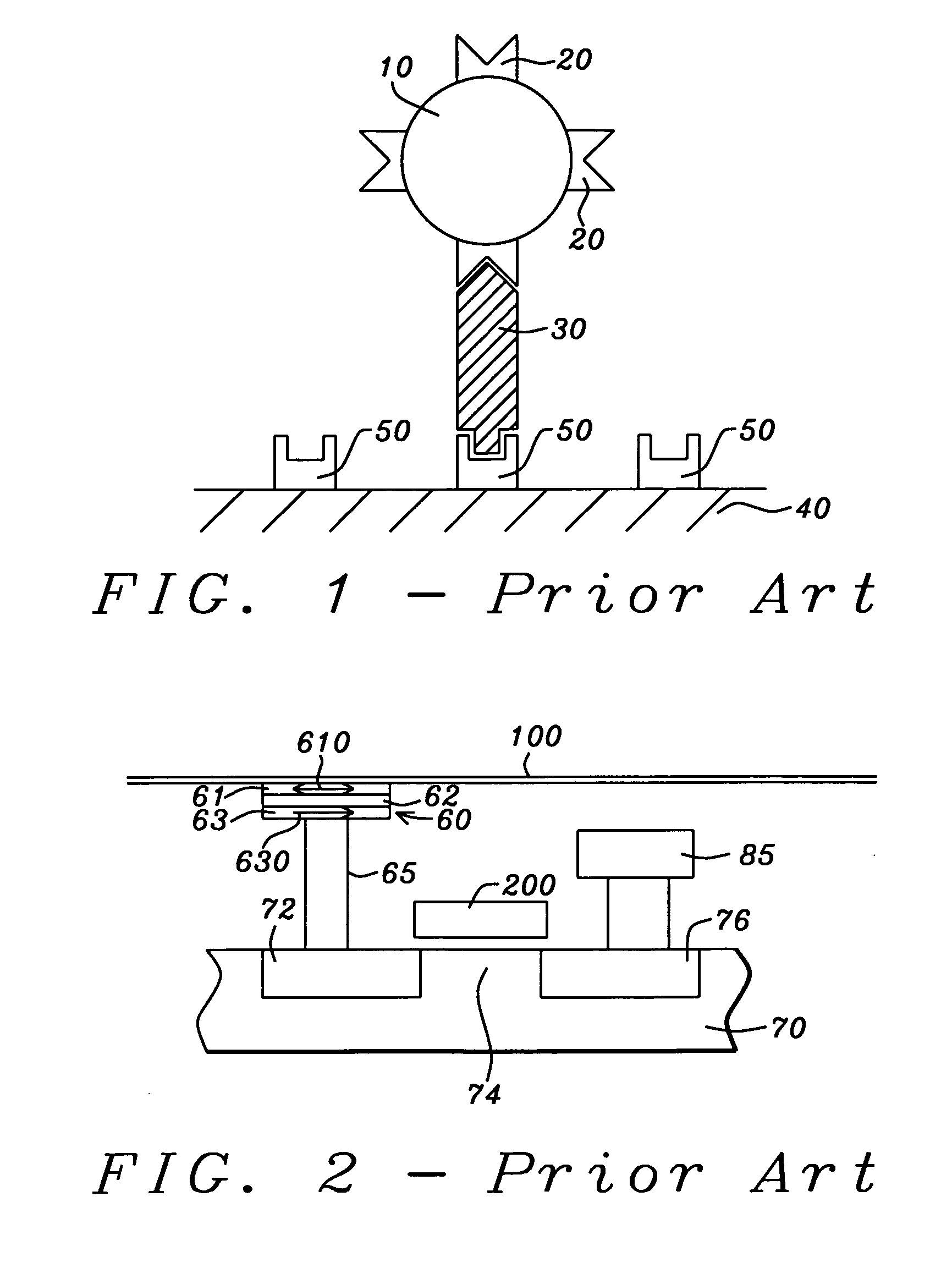Devices using addressable magnetic tunnel junction array to detect magnetic particles
- Summary
- Abstract
- Description
- Claims
- Application Information
AI Technical Summary
Benefits of technology
Problems solved by technology
Method used
Image
Examples
Embodiment Construction
[0042]The preferred embodiment of the present invention is a magnetic particle detecting magnetic sensor comprising a substrate containing a regular array of MTJ cells positioned at the orthogonal crossings of parallel rows of word lines and bit lines. The spacing between the rows is approximately equal to or less than the dimensions of a magnetized small superparamagnetic particle or bead whose presence is to be detected. The array is substantially beneath or within a planar substrate on whose surface is located binding sites that are receptors for a specific molecular target. The molecular target has already been bonded to the small superparamagnetic particle or bead. When the bead is subjected to an external magnetic field it produces its own induced magnetic field whose components within the plane of the MTJ free layer are capable of moving the magnetic moment of the free layers of nearby MTJ cells. The movement of these magnetic moments produce a detectable signal indicating re...
PUM
 Login to View More
Login to View More Abstract
Description
Claims
Application Information
 Login to View More
Login to View More - R&D
- Intellectual Property
- Life Sciences
- Materials
- Tech Scout
- Unparalleled Data Quality
- Higher Quality Content
- 60% Fewer Hallucinations
Browse by: Latest US Patents, China's latest patents, Technical Efficacy Thesaurus, Application Domain, Technology Topic, Popular Technical Reports.
© 2025 PatSnap. All rights reserved.Legal|Privacy policy|Modern Slavery Act Transparency Statement|Sitemap|About US| Contact US: help@patsnap.com



